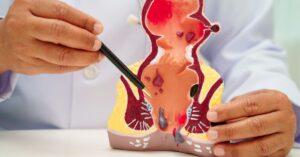If a venous ulcer is suspected, your physician will do a complete physical, including checking the blood pressure in your arm and your ankle. Accurate diagnosis is the foundation of good leg ulcer care. The diagnosis is typically based on how the ulcer began and physical exam findings.
Ambulatory Phlebectomy:
This procedure to treat branch varicose veins can be performed in an office or outpatient. Patients are asked to stand for several minutes to allow the veins to fill, and the doctor marks the veins that are to be removed. Once the veins are observed and confirmed by the patient, numbing medication is injected into the skin along the course of the veins to be treated. Tiny incisions, or nicks, are made in the skin, and the veins are removed using a small hook. These incisions are so tiny that no stitches are needed.
Sclerotherapy:
This procedure to treat branch varicose veins can be performed in an office or outpatient. Smaller veins are injected using a tiny needle containing a liquid that scleroses, or closes down, the vein. This treatment does not require any anesthesia or numbing medicine. Smaller veins (also known as spider veins) are best treated with this procedure.
Endovenous Ablation:
This procedure can be done as an outpatient. A catheter is inserted into the great or small saphenous vein. After the numbing, medication is injected into the skin along the vein area to be treated, the vein is heated with radio waves or a laser. This heating process, or ablation, takes less than 10 minutes. The blood pool in the treated superficial vein is naturally redirected into the deep vein system. Patients experience almost immediate relief. Patients are encouraged to walk immediately after the procedure. Pain, which is seldom severe, is managed with anti-inflammatory medications.
For varicose ulcers treatment in Indore, get in touch with us.





